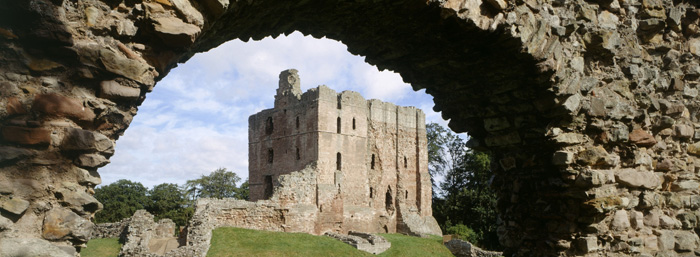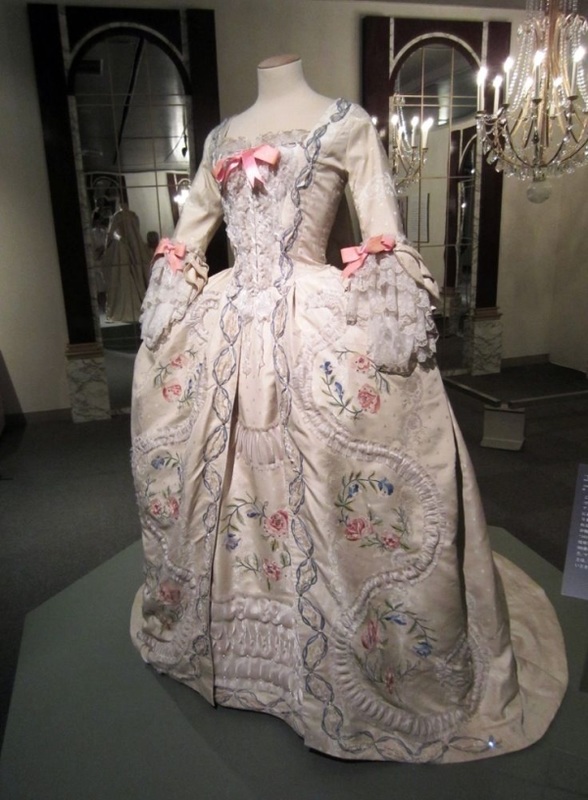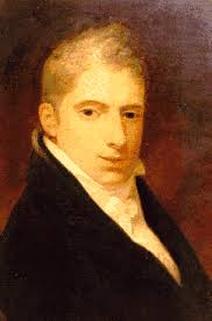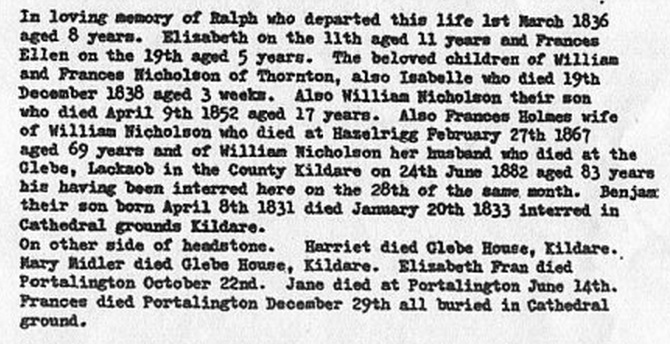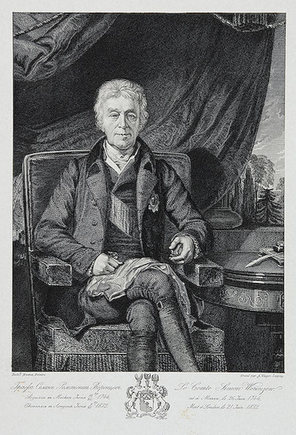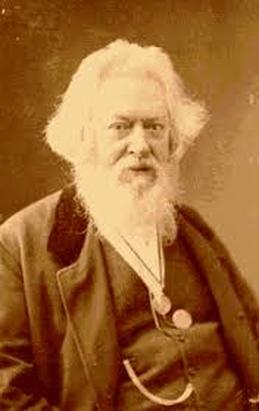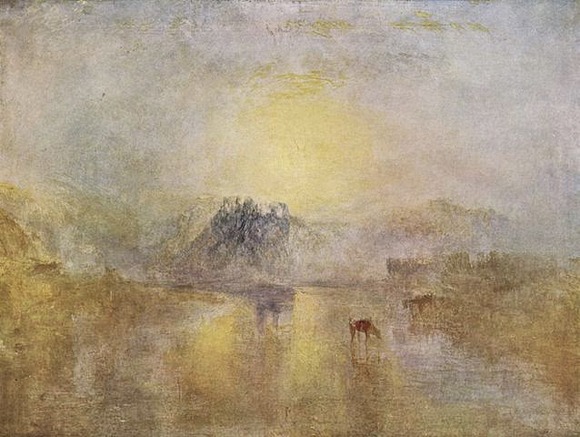IntroductionIn my attempt to bring some ‘art and culture’ to this month’s blog I have looked to a branch of the Smith family tree which I tend to avoid, due to its complex and downright complicated nature. Anyone who is familiar with the pedigree will understand, (and possibly groan), when I mention the Nicholsons of Thornton & Loanend. Never in my years of researching have I encountered a family so widely travelled in the global sense and yet so narrowly in terms of ‘gene pool’! The number of intermarriage between cousins, first, second and otherwise is literally quite staggering. Given the challenges of explaining many of these relationships within the context of the focus of the story, it really is no wonder that to date I have limited the Nicholson family to “cameo appearances” only. Nevertheless they remain a fascinating and intriguing bunch and I am sure if I were to write a feature centred around this section of the extended pedigree alone, I would have enough material to publish a blog a month for at least the next year! However, in an effort to keep my story within the realms of comprehension, for the purposes of this narrative I shall limit family connections to those of the children of Ralph Nicholson of Thornton (1754-1817) and his wife Mary Middleton (1763-1803) and in particular how they interlink with the Wornum family of London. (For links to Nicholsons previously featured in my blogs please see the link section at the end of this post). Ralph Nicholson of Thornton (1754-1817) & Mary Middleton (1763-1803) Both came from solid farming backgrounds, his in Northumberland, and hers in Haughten le Skerne, Durham. The Couple married in October 1779 and between then, and the time of Mary’s death in 1803 at the age of 40, they produced 12 children with no less than eleven surviving into adulthood:
As this story progresses you will find this list most useful and will undoubtedly, need to refer back to it. Music & The MantuaRobert Wornum was born in London in 1780 to parents Robert Wornum Senior and Elizabeth Robson, who had married in London in 1778. Elizabeth had been born in Longhoughton, yes Longhoughton! to parents Robert Robson and Margaret Nicholson. (Margaret’s father Robert was a 1st cousin of Ralph of Thornton’s grandfather a previous Ralph of Thornton (1678-1747). The Robson family it appears were also farmers with interests at Little Mill, Field House nr Lesbury and freehold properties in Alnmouth, which crucially included grain stores. The shipping of corn from Alnmouth was at its height at this time following the construction of what became known as the “corn” road from Hexham to the port in 1750. This established an important trade link for grain from Alnmouth to London, with return cargoes containing goods from London Merchants sending their wares for sale in the nearby market town of Alnwick. Robert Wornum Senior (1742-1815) was a manufacturer of violins, cellos and possibly guitars. He is recorded as such in the trade publications of the time such as the ‘Musical Directory’ of 1794. He was also a publisher and seller of sheet music operating from premises in Glasshouse St in the London District of Soho. By 1777 his business was active at 49 Wigmore Street, Cavendish Square, an address which would become synonymous with the brand of “Wornum”. It appears that there were even more strings to the Wornum bow. Evidence in the form of several apprenticeship indentures, ranging in date from 1779 to 1793, respectively list both Robert, and his wife Elizabeth, as ‘Mantua Makers’. These documents also contain a reference to an additional premises, located in the adjoining road of Welbeck Street in 1781. The Mantua was a dress that resembled a coat or a manteau in design, worn over petticoats and large whalebone hooped underskirts. It often had an open bodice in which was pinned a separate stomacher made from the same or a contrasting fabric. They were elaborate and exquisitely made often using silks woven by the artisan French Huguenots of Spitalfields. At the height of their popularity in the early 18th Century, by the 1760’s the wearing of such garments was limited exclusively to court circles, and fell out of fashion almost entirely when King George IV declared that the ladies of the court were no longer required to wear ‘hoops’. These snippets of information give a good indication of the clientele who would have availed themselves of the ‘Wornum’ dressmaking services, and of the ladies with whom they were in contact. To the young female relatives in rural Northumberland this London lifestyle must have seemed exciting and exotic indeed, but Northumberland must have held its charms for the city dwelling cousins too, as this death notice in the newspaper of 1803 clearly demonstrates. Sarah Wornum was the 4th daughter of Robert & Elizabeth born in London in 1783 and I can only assume that she was visiting relatives, Robson, Nicholson or otherwise, in the Alnwick area at the time of her demise. It does however illustrate the family connection was alive and well some seven years prior to the marriage of her brother, Robert Wornum junior to Catherine Nicholson (daughter of Ralph of Thornton & Mary Middleton) in St George’s, Hanover Square in 1810. However, the family’s connection with fashion and dressmaking does not end with demise of the mantua. By the time of the 1841 census Harriett Nicholson Stamp b. 1822 and her elder sister Mary b.1818 (two of the daughters of Mary Nicholson and Thomas Stamp, an auctioneer in Alnwick, and nieces of Catherine Nicholson, above) are both dressmakers, residing in Hanover Square and by 1851 Harriet is listed as a partner in a dressmaking business operating out of 24 Wigmore St! In 1861 Harriet, still dressmaking at the time of the census, must have left London behind as in December aged 39, she married the newly ordained Rev. John Miller Strachan in Madras, India, who in 1882, would be consecrated the 2nd Bishop of Rangoon. Robert Wornum Junior (1780-1852) & Catherine Nicholson (1784-1856) Born in London in October 1780, it is widely reported that Robert Wornum junior was destined for the ‘Church’. Instead however he followed in his father’s footsteps and in 1810, the same year of his marriage to Catherine, he entered into a brief partnership with piano manufacturer Wilkinson & Co which traded from premises at 315 Oxford St & 11 Princes St, Hanover Square . This partnership was dissolved in 1813, following a fire in the Oxford St factory, and Robert returned to 42 Wigmore St and branched out on his own. As I am no expert in the inner workings of the piano I have included a link to an article at the end of this post which explains the technicalities in some detail.
Following the death of his first wife Caroline in 1882, Alfred married his first cousin Elizabeth Frances Nicholson, the daughter of William Nicholson and his own first cousin Frances Holmes Nicholson. (At this point my computer software suffered a small seizure!) William was tenant of Lennel Hill (where I now live) from between circa 1835 to the family’s departure to Lackagh, Co Kildare in Ireland in the mid 1860’s. The memorial headstone to this branch of the Nicholson family in Norham churchyard does not make for pretty reading. Elizabeth Frances was not destined to enjoy married life for long and was widowed just five years later in 1888. Following Alfred’s death she re-joined her family at their home in Portalington, Ireland where she herself passed away in 1913. Of Alfred’s siblings his eldest sister Catherine Nicholson Wornum b 1811 had married in 1838 her second cousin Benjamin Alexander Robert Nicholson a doctor, the son of Benjamin Nicholson of Berwick, brother to Ralph of Thornton. The couple immigrated to India where they had two sons, Beresford Alexander Nicholson in 1840 and Alfred Wornum Nicholson born 2 November 1842. Catherine died four days later and was followed by Benjamin in 1854, leaving the two boys orphaned at just 12 and 14 years of age. Alfred’s youngest sister Roberta Nicholson Wornum married her step cousin, Alexander Beazeley son of Commander George Beazeley (former husband of Elizabeth Nicholson) by his third wife Margaret Knowles of Berwick upon Tweed in London in July 1863. (Elizabeth Nicholson had died following the birth of their daughter Catherine Eliza Beazeley in 1829).
Ralph Nicholson Wornum (1813-1877) and the National Gallery The most famous of all Alfred’s siblings is undoubtedly his eldest brother Ralph Nicholson Wornum, who was born at Thornton in Northumberland and christened at St Cuthbert’s Church Norham on 28th January 1813. As a young man he abandoned his academic studies in favour of his passion for art and travelled extensively for six years visiting art galleries throughout Europe. In 1839 he returned to London and set-up as a portrait painter, but it was a writer and art critic that he excelled and as such achieved high acclaim within the art world. In 1843 he married American born Elizabeth Seldon reputedly one of the most beautiful women in London, and with whom he would have ten children. In 1854, following a shake-up, the family took up residence at the National Gallery in Trafalgar Square as Ralph had recently been appointed: “.. as keeper of the National Gallery and secretary to the trustees, upon the recommendation of Sir Charles Eastlake. His appointment was taken as an augury of reform in the administration of the gallery. Wornum's ‘whole time and knowledge were now secured for the public’ (GM, 2nd ser., 43, 1855, 168), and the salary of the post was raised to £750 a year. In March 1856 a Treasury minute reconstituted the administration of the gallery: the keeper was to reside within the gallery to ensure the safe custody of the collection and to compile a complete catalogue of works that might be suitable for inclusion in the national collection. Wornum was also responsible for hanging the paintings and supervising their cleaning. However, it was to the Turner collection that he devoted most of his energies”. A position that required him to “live in”. I do find it a little ironic that the focus of his energies should be Turner. Whilst not the most famous of his works, Turner is probably the most famous artist to paint Norham, Ralph’s birth place and the home of the Nicholson family. Turner was a frequent visitor and painted scenes of the Castle and River Tweed many times. One of his most critically acclaimed studies was “At Sunrise”, painted in 1845, which remained unpublished until after his death in 1851, as it was, Turner claimed unfinished. The beautiful Elizabeth passed away in July 1860, and with a large and still very young family Ralph once again found himself in ‘want of a wife’. On the 1st of August he married his 1st cousin Harriet Agnes Nicholson, daughter of Ralph jnr of Thornton and Mary Wood at St Cuthbert’s Church, Norham, and with whom he would have a further four children, bringing his total to fourteen. Ralph held his position at the National Gallery until he died at his home No 20 Belsize Square, Hampstead on 15th December 1877. He was survived by his second wife (and cousin) by some 26 years. In the census following his death Harriet is still resident at 20 Belsize Square, along with several children, step children and the Strachans visiting from India. Conclusion I could carry on with countless Wornum family achievements, of which, probably the most notable being award winning architect George Grey Wornum, (grandson of Ralph Nicholson Wornum and his first wife Elizabeth), who designed the building which is current HQ of the Royal Institute of British Architects in London, but I think have reached the end of this particular chapter, and its direct links to the Nicholson family of Thornton. I remain amazed at the closeness of the relationships maintained between the Nicholson and Wornum families, despite the distance and constraints of the times, and just wonder if religion had a hand in it all? Whilst I think it would have been an amazing experience to have grown up surrounded by music, beautiful works of art, rubbing shoulders with such talented people, I fear it may have been somewhat wasted on me, and I would have found it all rather stifling. Personally, I think that like now I would like to have visited my city cousins to see what the fuss was about, but then to have retreated to the openness and fresh air of the ‘Borders’ where things seem a little more ‘real’. LinksTony Wornum's Family History Page
http://www.wornum.co.uk/ More about Mantuas http://www.lincstothepast.com/exhibitions/treasures/18th-century-mantua/ Wornum & The Piano https://en.wikipedia.org/wiki/Robert_Wornum My feature of December 2014 covered the descendants of Mary Middleton's brother, Hodgson Middleton and his wife Phillis Smith http://www.bordersancestry.co.uk/blog/the-middletons-of-strathmiglo-loved-ones-lost , and their son William Nicholson featured back in July 2013 http://www.bordersancestry.co.uk/blog/a-place-a-philosopher-the-potato-a-private-printers-painters-publishing-the-pacific-a-pirate-part-i
7 Comments
Ann Humble
28/8/2015 10:58:56 pm
As ever fascinating !
Reply
Susie Douglas
29/8/2015 12:19:52 am
Well spotted 'eagle eyes'. Have corrected it. Just been told that RNW painted Norham Castle himself too!
Reply
Heather CullingSmith
29/8/2015 02:02:18 am
I have a copy of a Turner on my wall of Norham Castle on River Tweed
Reply
Susie Douglas
29/8/2015 03:37:11 am
Lovely to hear from you Heather. I don't think any of us, no matter what part of the world we live in, are far from Norham in spirit.
Reply
julian foynes
27/5/2017 04:29:40 pm
have written a biography of George Beazeley and am totally confident that he was indeed the (illegitimate) son of Ambassador Vorontsov. Among others, Professor Cross of Cambridge and Mikeshin of St Petersburg have read the correspondence which confirms this--not just that of Beazeley and his descendents, but of his Russian half-brother.
Reply
Susie Douglas
27/5/2017 05:15:31 pm
Hi Julian. Thank you for getting in touch. How fascinating - if you would be interested in sharing a taster from the biography I am sure the Wornum and Nicholson readers of my blog would love to hear about it too. Some members of the historical Nicholson family had certainly mastered the art of self promotion and auspicious marriage making, moving as they did in interesting circles!
Reply
julian foynes
30/9/2017 04:15:58 pm
Susie Leave a Reply. |
AuthorSusie Douglas Archives
August 2022
Categories |
Copyright © 2013 Borders Ancestry
Borders Ancestry is registered with the Information Commissioner's Office No ZA226102 https://ico.org.uk. Read our Privacy Policy
